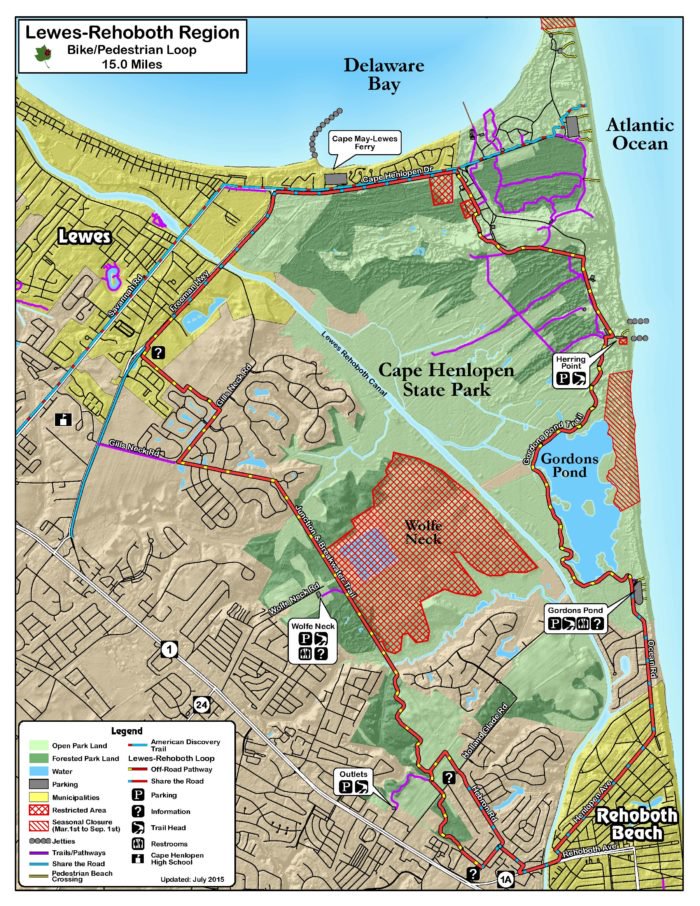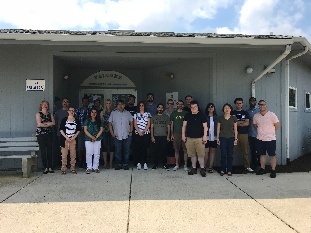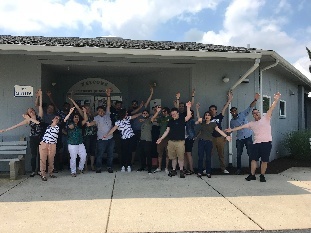#fermischool
Schedule for Week 1 and Week 2
| Tues, May 29 | Wed, May 30 | Thurs, May 31 | Fri, June 1 | Sat, June 2 | |
|---|---|---|---|---|---|
| 8:15 | Breakfast | Breakfast | Breakfast | Breakfast | Breakfast |
| 9:00 | Welcome and Introduction (ppt) - Liz | Intro to Fermi LAT - Regina Caputo | Detectors for LAT - Regina | GRB Science - Judy Racusin | Cosmic Rays and Shocks - Pierre Cristofari |
| 10:00 | Intro to the Fermi Mission and Sky - Julie McEnery | Intro to Fermi GBM - Michelle Hui | IACTs - Marcos Santander | Transients with HAWC - Michelle | Shock accel and expansion of SNRs - Pierre |
| 11:00 | Break | Break | Break | Break (Photo!) | Break |
| 11:30 | Air Showers - Pat Harding | HAWC Science - Pat | The Basics of AGN & their High-Energy Emission - Eileen Meyer | Student Talks / 1 Slide Summaries | Calculating and using Upper Limits - Eileen |
| 12:30 | Lunch | Lunch | Lunch | Lunch | Lunch |
| 1:30 | Tour of Fermi Resources Getting Started with Maximum Likelihood Analysis - Pat Harding Getting Started with Fermi: Students choose a source for analysis. | Getting started with Likelihood Analysis in LAT - Jeremy Perkins Quiz tool link: kahoot.it
| Generating LAT XML Models - Elizabeth Ferrara instructions for using make3FGLxml.py script Advanced Likelihood/fermiPy (data.tgz) PDG Statistics review pdf (deltaLL values in Table 38.2 on page 29) | Likelihood Examples/Advanced Topics
Student Projects | Advanced Topics: Upper Limits Getting started with Burst Analysis Michelle/Judy Student Projects
|
| 4:45 | End of the Day Tagup | End of the Day Tagup | End of the Day Tagup | End of the Day Tagup | End of the Day Tagup |
| Crab Feast (tutorial) ~6:30/7:00 on patio |
| Mon, June 4 | Tues, June 5 | Wed, June 6 | Thurs, June 7 | Fri, June 8 | |
|---|---|---|---|---|---|
| 8:15 | Breakfast | Breakfast | Breakfast | Breakfast | Breakfast |
| 9:00 | Intro to Gravitational Waves - Peter Shawhan | Gravitational wave science - Peter | Looking for point sources - Marcos | Pulsar Timing Arrays - Elizabeth Ferrara | Summary (ppt) |
| 10:00 | GBM transients and mulitmessenger - Michelle/Judy | Neutrinos and Gamma Rays - Marcos | Blazars and Variability - Eileen | BurstCube - Jeremy | Project Results and Feedback |
| 11:00 | Break | Break | Break | Break | Break |
| 11:30 | Student Talks / 1 Slide Summaries | Gamma-ray Binaries - Jamie Holder | Future Gamma-ray Prospects - Judy | Workshop Close Out | |
| 12:30 | Lunch | Lunch | Lunch | Lunch | Lunch |
| 1:30 | Free afternoon | Time Series and Matched Filtering - Peter Student Projects | Student Talks / 1 Slide Summaries Advanced Topics:
Student Projects | Advanced Topics: Student Projects | |
| 4:45 | End of the Day Tagup | End of the Day Tagup | End of the Day Tagup | ||
| Virden hosted BBQ on the patio | Sunset Cruise from Anglers Fishing Center (Map) Meet there at 5:45pm Please bring $3-$5 for tip |
Tyler Parsotan - "Monte Carlo Modeling of Photospheric Emission in Gamma-Ray Bursts" - abstract
| We present the analysis of photospheric emission for a set of FLASH simulations. The results are acquired by using the Monte Carlo Radiation Transfer code (MCRaT) to simulate thermal photons scattering through the collimated outflow of long Gamma Ray Bursts (LGRBs) caused by a variety of progenitors and jet conditions. MCRaT allows us to explicitly show the time evolution of the photosphere within the photospheric region in addition to the gradual decoupling of the photon and matter counterparts of the jet. The results of the radiation transfer simulation are also used to construct light curves and time resolved spectra at various viewing angles, which are then used to make comparisons with observed data, and outline the agreement and strain points between the photospheric model and LGRB observations. We find that our fitted time resolved spectral Band β parameters are in agreement with observations, even though we do not consider the effects of non-thermal particles. Finally, the results are found to be consistent with the Yonetoku relation. |
Dave Tsang - "Resonant Shattering Flares as EM/GW probes of NS physics" - abstract
Resonant Shattering Flares (RSFs) are expected to occur during the inspiral phase for some NS- NS and NS-BH mergers. They result from the resonant tidal excitation of the NS crust-core interface mode fracturing the crust and sparking a relativistic pair-photon fireball, emitted seconds before the merger. RSFs are prompt, bright, and isotropic, allowing detection and triggering from well beyond the LIGO-horizon and may be an important source for detectable electromagnetic counterparts to GW mergers. When a GRB is present, they appear as pre-cursors to the main flare, while for off- axis systems they should appear as isolated under-luminous GRBs with extremely short duration. I will discuss the physics and detectable emissions for RSFs compared to other counterparts, as well as afterglow, detection, and triggering strategies. |
Milena Crnogorčević - "Searching for axion-like particles in core-collapse supernovae using the Fermi-LAT and GBM" - abstract
Axion-like particle (ALP) is a dark matter candidate predicted by certain extensions of the Standard Model. They are emitted in core-collapse supernovae (CCSNe) via the Primakoff process and undergo a conversion into gamma rays in the presence of an external magnetic field. We observe this effect through an enhanced gamma-ray flux from a CCSN. The study of these spectral irregularities in gamma-ray signals allows for a search of traces of ALPs, as well as determination of constraints on photon-ALP coupling. In this project, we search for these irregularities in the extragalactic core-collapse supernovae with spectral peaks at around ~60 MeV, corresponding to the peak of ALP-induced gamma-ray bursts, thus considering the data both from the upper energy limit of the Fermi-GBM as well as lower energy limit of the LAT instrument. |
Ibrahim Safa - "Imaging Galactic Dark Matter with High Energy Cosmic Neutrinos"
Leonardo Garcia - MHD simulations
Maria Victoria del Valle - "Modeling the non-thermal emission from high velocity stars" - abstract
The interaction of the wind of massive high velocity stars, runaway stars, with the interstellar medium produces bow shocks. Observations and theoretical works suggest that these bow shocks might be non-thermal emitters. In this work we elaborate a model for describing the hydrodynamical interactions and the relevant radiative processes associated with the collision of a runaway star wind with the interstellar material, assuming that relativistic particles are accelerated at the reverse shock. The wind-medium interaction is modeled using hydrodynamical numerical simulations. We use the results of the simulations as an input for computing the non- thermal emission, solving the transport of relativistic particles in this wind-medium collision scenario. From our results we establish new theoretical predictions on non-thermal and especially gamma-ray emission from these sources. |
Binita Hona - "Study of TeV Gamma-Ray Emission at the Cygnus Cocoon Region with HAWC data" - abstract
Unlike cosmic rays, gamma rays are not deflected by interstellar magnetic field and hence can point towards their source of emission. This provides a unique opportunity to study astrophysical sources and understand very high energy physics in our galaxy. The Cygnus arm of our galaxy is a star forming region with multiple gamma-ray sources and is being studied by many observatories. The High Altitude Water Cherenkov (HAWC) Observatory has the best sensitivity to very high energy gamma ray emission and has detected bright emission from the Cygnus region. One bright source in the Cygnus region is 2HWC J2031+415, which is an unidentified source. Possible counterparts are a cocoon of freshly accelerated cosmic rays detected by Fermi-LAT at lower energies and Pulsar Wind Nebula detected by VERITAS observatory. The goal of my analysis is to investigate the morphology of 2HWC J2031+415, possible correlation with emission at lower energies and the emission origin. This presentation will give a brief overview of the research and discuss the results obtained with HAWC data along with the results seen at lower energies to have a deeper understanding of 2HWC J2031+415 region at very high energies. |
Ari Brill - "Deep Learning for Event Classification with the Cherenkov Telescope Array" - abstract
Imaging atmospheric Cherenkov telescopes (IACTs), including the Cherenkov Telescope Array (CTA), detect images of the atmospheric showers generated by gamma rays and cosmic rays as they are absorbed by the atmosphere. Background cosmic rays greatly outnumber gamma rays, so correct classification of the detected images is critical for maximizing IACT sensitivity. I am exploring new event classification methods for CTA using convolutional neural networks, a class of deep learning algorithms specialized for image analysis. Unlike existing analysis methods, convolutional networks can extract useful features directly from images without having to define a preset parametrization. Initial studies using convolutional networks for gamma/hadron classification show promising performance. |
Samuel Spencer - Multiwavelength Fermi Bubbles
Mary Keenan - "Low-Frequency Observations as a Proxy for Jet Power in RL AGN and the Connection of Jet Power and Jet Speed" - abstract
Radio-loud Active Galactic Nuclei have large-scale jets of relativistic plasma propagating away from the central black hole. Slowed plasma from these jets accumulates into giant radio lobes, resulting in an isotropic synchrotron emission which dominates at low radio frequencies. This isotropic luminosity has been shown to correlate with the kinetic power of the jet (Cavagnolo et. al 2010, Ineson et. al 2017) and thus serve as a viable method of estimating it. We have compiled a large catalog of jet proper motions, as measured by VLBI in order to investigate the relation between the apparent speeds and the kinetic jet power. We have found preliminary evidence that the kinetic power of the jet sets an upper bound on the speed at which the jet ejects plasma components from the core, and are currently investigating the nature of this bound. |
Adam Harvey - "The seed factor: how a combination of four observables can unveil the location of the blazar GeV emission" - abstract
We present here a method for constraining the emission location of γ-rays in powerful, lined blazars (i.e., flat spectrum radio quasars (FSRQs)). We have developed a diagnostic criteria, which we term the seed factor, to differentiate between γ-ray emission due to external Compton (EC) scattering in the broad line region (BLR) and the molecular torus (MT). The seed factor is determined entirely by four observable quantities; the synchrotron and inverse Compton (IC) peak frequencies, and the respective peak luminosities. It may thus be possible to use the seed factor to constrain the emission location in a model-independent way. We also present preliminary results of our analysis regarding the seed factor in quasi-simultaneous multi-wavelength SEDs from the Fermi LAT Bright AGN Sample (LBAS), historical data from the ASDC SED Builder of FSRQs in the the Monitoring Of Jets in Active galactic nuclei with VLBA Experiments (MOJAVE) sample, and quasi-simultaneous multi-wavelength SEDs from the Dynamic SEDs of southern blazars (DSSB) sample. |
Amar Hekalo - "The Doppler Factor Crisis of TeV blazars" - abstract
Active Galactic Nuclei (AGN) are strong emitters at all wavelengths, often featuring relativisti- cally propagating streams of matter or “jets” from the vicinity of a supermassive black hole at the nucleus of the galaxy. Blazars are a sub-class of AGN, where a jet is pointing almost directly at the observer, leading to relativistic effects such as Doppler beaming and to the illusion of appar- ent superluminal motion. In the most extreme case of so-called TeV blazars, the emission reaches up to the highest observable gamma-ray energies. Studies of the TeV emission imply strong Doppler beaming of highly relativistic jets with Lorentz factors up to 50. Using Very Long Baseline Interferometry (VLBI) in the radio range, the jet speeds can be directly measured. Such studies typically find slow and only slightly relativistic jets, which is in stark contrast to the gamma rays. This discrepancy is known as the Doppler Crisis of TeV blazars. We study a new sample of TeV blazars on the Southern Hemisphere, which are monitored with VLBI as part of the TANAMI program. While most of the TANAMI TeV blazars show slow or stationary jets, some sources do show apparent superluminal motion in line with the expectation of high Lorentz factors in TeV blazars. |
Andrea Gokus - "The Spectral Energy Distribution of the Candidate Neutrino Source TXS0506+056" - abstract
The origin of extragalactic neutrinos with energies above 1 PeV is still unclear. One of the best candidates are jets from Active Galactic Nuclei (AGN), in which particles are accelerated to relativistic speeds. Blazars, a subclass of AGN, show jet orientations towards Earth and are therefore of specific interest in the search for neutrinos, because we can directly look into the jet and observe the underlying physical processes caused by the relativistic particles. Based on hadronic emission models of the jet, interacting protons can produce cascades, in which neutrinos are generated. These models predict a tight correlation between the neutrino flux and the time-variable gamma-ray emission, which could be proven by linking neutrino detections to gamma-ray flares. On September 22th, IceCube detected the first extremely high energy (EHE) event that is spatially and temporally coincident with the increase of gamma-ray emission from a single source (TXS0506+056). We develop a model of a time-resolved, hybrid (leptonic & hadronic) spectral energy distribution, and compare the results with multi-wavelength observations. We use Fermi/LAT spectra to constrain the shape of the high-energy bump in the SED in order to estimate the expected neutrino flux. |
Wednesday, June 6
Atreya Acharyya - “Using Fermi for CTA population forecasts” - abstract
The Cherenkov Telescope Array (CTA) is the next generation ground-based γ-ray observatory. We make use of the Fermi-LAT 3FHL catalogue and the software package Ctools to discuss a detailed analysis of the extragalactic source population (mostly blazars) that will be studied in the near future by CTA. This analysis is based on simulations built from the expected array configurations and information reported in the 3FHL catalogue. We also touch upon the standard analysis chains in Ctools as well as take into account the extragalactic background light. |
Angaraj Duara - "Characterising SiPM Photodetectors for Cherenkov Telescope Array Camera"
Connor Duffy - "Evaluation of CHEC-S: A high-speed camera for CTA"
Things to Do:
Take the ferry to Cape May https://www.cmlf.com/
Hire kayaks https://www.questkayak.com/ (Don't forget sun screen!)
If the weather's good, go to the beach! Lewes Beach is fine, or there's a beach on the oceanside in Cape Henlopen State Park. (Don't forget sun screen!)
Visit Prime Hook National Wildlife Refuge: https://www.fws.gov/refuge/prime_hook/ (Don't forget bug repellent)
Visit the Zwaanendael Museum: https://history.delaware.gov/museums/zm/zm_main.shtml
Visit the US Lightship Overfalls (located just off of Pilottown Rd): http://www.overfalls.org/
Lewes-Rehoboth Bike Path



